The Most Important Skill for Software Developers Isn't Writing Code
Brian Cline – Chief Technology Officer
As a software developer, I’ve always felt the most important skill to have was being able to write code and being able to multitask. Over the years, I’ve realized that while writing code is important but it’s definitely not the most important thing in developing software.
Multitasking isn’t actually important either, and it’s very difficult for it to actually be done in practice because writing software requires a laser focus. So, what is the most important skill then?
I believe that a lot of my personal failures as a programmer were the result of communication problems and not usually technical reasons. The most important skill in software development is being able to communicate clearly.

What is Communication?
Communication means a lot more than just being able to say what you mean, and have it understood. Communication also means being able to listen and understand what others are asking for. Learning to communicate as a software developer can be difficult as it’s very different from programming because people aren’t the same as computers.
I bet you communicate every day whether it be with your colleagues or your manager. Like programming, the best way to get better at communicating is to better intentionally practice it and to do things that we wouldn’t normally do.
Most likely, a third to half of the work day is spent communicating with others whether it be in written or verbal form. It’s a really good idea to start practicing being good, compassionate, and passionate person. So, how do you do this?
Here’s a couple of principles I’ve been trying to follow that I feel are pretty helpful:
- Listen
- Choose to encourage over criticizing.
- When criticizing it must be constructive
- Put yourself in the other person’s shoes (yes this is definitely cliché).
Listening
I believe that poor listening habits are the primary cause of many of my daily problems and probably they’re the cause of your problems too. I think the big thing to do is to really focus on listening and not limiting what you hear.
Focus on listening for the content, meaning, and feeling that that other person is expressing. It’s super important to just listen to understand and avoid interrupting, commenting or disagreeing. Wait through the moments of silence in case the other person isn’t done finishing a thought.
As left-brained analytical people, we all have a desire to fix the problem or concern and not listen to the entire message. This unfortunately doesn’t help with listening which results in things being missed.

Choose to encourage over criticizing
Feedback is essential to a being a good software developer and for running a well-functioning team. I’ve learned that only commenting on the poor-quality work results in the other programmer producing worse quality work.
Criticism usually ends up putting the other person on the defensive which usually results in a win for absolutely nobody. We developers almost never actually work alone, we are usually on teams of 3 – 7 people and spend lots of time reading and reviewing other’s work.
When criticizing it must be constructive
As a young leader in the Canadian Forces, it was constantly banged into my head that when providing feedback to my staff it had to be constructive. Feedback had to something they could actually change.
Feedback like “you’re an idiot” won’t help any. It won’t help that person to grow, it will discourage them and cause friction.
In the military we always told to use the feedback sandwich which means a Praise, Improvement and a Praise. The feedback should look something like this:
Focus on a particular strength of the person. It could be that they’re a really hard worker, or that you appreciate the task getting done so quickly. The criticism, basically what needs improvement. The feedback needs to be constructive though, you need to show how you would do it. Focus on another strength of the person or you could use the same positive feedback as was started with, and then talk about how much better it could be with the criticism being followed.

Put yourself in the other person’s shoes
“Putting yourself in the other person’s shoes” is a lot more than a cheesy cliché or quote from a book like To Kill a Mockingbird. It means that you need to have empathy and understand the feelings that the other person is having. Resolving conflict through empathy is a vital communication skill.
Empathy is recognizing other people’s emotions and going beyond your own concerns. People aren’t generally being evil, unkind or stubborn. They are reacting to previous experience or the knowledge they have.
Good communication is what will drive growth whether it be personal growth or career growth. Terrible communication will cause your personal life and career to stagnate.
Other Resources
The Developer on Fire podcast was a podcast that had a fairly large impact on me. There’s probably close to a dozen episodes where the guests speak about communication being important.
Saving Goals: Caddle team member Ryan
Are you the type of person who can feel cash burning a hole in their pocket as soon as they get it? Or, maybe you hold on to your fun money until you find something worthy of your hard-earned coin?

Either way, it might pay off to have a strategy when it comes to cashing out on Caddle. Ryan, an administrative coordinator at Caddle, prefers to delay spending until something catches his eye:
“As an individual with an ever-changing life and fluid opinions, I’m not after a specific item with my Caddle cash-out. I do however enjoy a nice pile of satisfaction so I believe I’ll wait for more money than the minimum $20.00 ,and knowing myself I will spend that hard earned cash-out on something I want, not something I need due to my paychecks going to what I need. Looking back on this, I’ll probably purchase a video game!”

When it comes to specific strategies, he advises savvy shoppers to make sure they want the item on offer “for a reason other than the Caddle credit. For example, getting an item (you) would normally buy or an item one is planning on trying. If (you) buy just to get the credit, it is almost always a loss of money (ALMOST).”
Australia Travel: Caddle recommends
Travel Australia
Australia has become a mecca for everyone from the most rugged of backpackers and beach bums looking for an escape to paradise to animal lovers, exotic foodies, photographers and thrill seekers.
The world’s largest island and sixth largest country has a sparse population of 24 million spread across 7.6 million kilometres.
The country’s western culture, thriving economy and friendly, welcoming people are similar to North America’s, but the brilliant beauty of everything from the miles of white, sandy coastline on Sydney’s beaches to the bustle of large cities like Sydney and Melbourne to the vast, wild landscapes of the Outback is uniquely its own. You won’t find any other place like this in the world, which is why more than 9 million international visitors visited the country in 2017-2018 , and why tourism is one of the five super growth industries driving Australia’s future prosperity. With those numbers, travel costs have inevitably increased, but you can still find savings if you do your research and plan ahead.
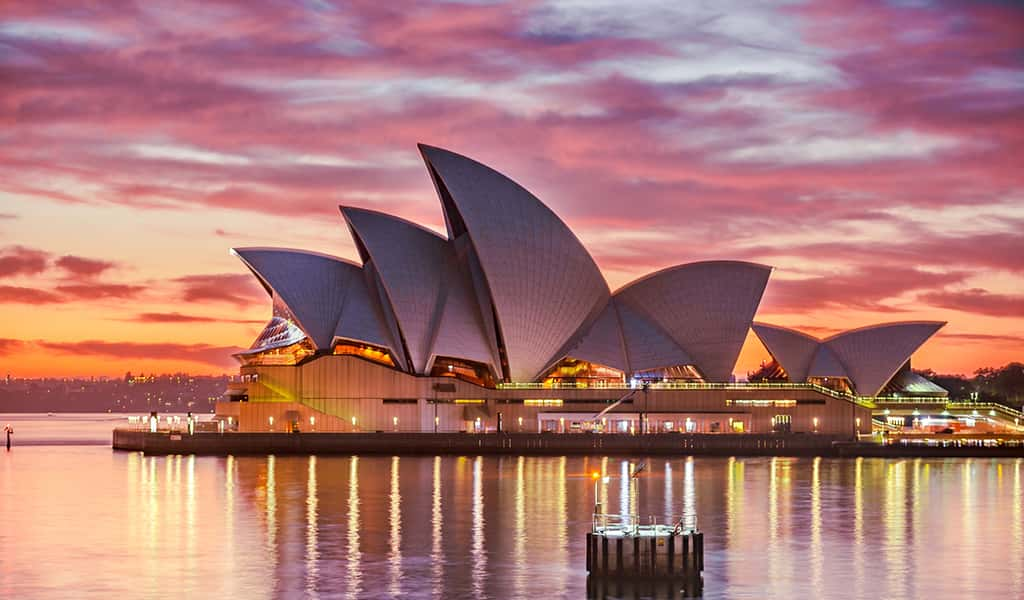
Looking to save? Avoid traveling during Australia’s summer
When you travel to the southern hemisphere, you’ll find seasons are opposite to what you’re used to in the northern hemisphere. Summer is from December through February and winter runs from June through August. Travel + Leisure notes that which region you visit plays a major factor in the weather you’ll see, from high seventies temperatures in the Northern Territory during the winter to cool winters and summers in the low seventies in southern Australia (locales like Adelaide and Melbourne).
If you’re looking to save, avoid the high season from December through February, when prices jump 25% for big-city accommodation. “Shoulder season” is March through May and September through November, and you’ll enjoy warm sun, clear skies and shorter lines, says Lonely Planet.
Tip: Visit the north coast any time from April through October, the south coast and Tasmania from October through April and the Outback September through November or April through June.
Prep for a day-long flight, touch down in a major city.
Be prepared to spend an entire day flying from North America to Australia, which has four main domestic airlines, including Jetstar, Qantas, Tigerair and Virgin Australia. Airnorth (which serves Northern Territory and northwestern West Australia) and Regional Express (which serves Eastern and southeastern Australia) are regional airlines.
Flying into Australia, you’ll probably land in one of the country’s major airports:
- Sydney Airport
- Melbourne Airport
- Brisbane Airport
- Perth Airport
According to sustainable travel blog Drink Tea & Travel, you’ll want to plan at least 6 to 8 months prior to your trip to boost your chances of catching an early-bird price on one of the airlines. Try to fly into one of the main cities listed above to get the best deals.
Public Transport
Take advantage of Oz’s extensive network of public transit, including bike paths and buses. Put your feet to pedals and follow the paths that take you through most major cities, as well as thousands of kilometeres kilometers of country roads. You’re also in luck if you’re a mountain biker – there are many forest trails. Looking for a challenge? Go outback cycling.
You’ll find most buses well-equipped with amenities such as AC, toilets and video screens; they’re also smoke-free and if you’re lucky, you’ll have wi-fi. However, hopping a bus isn’t always cheaper than flying and you may be setting in for a long trip. Also keep in mind that small towns will have a single drop-off/pick-up point (post office, shop, etc.) rather than a bus terminal.
You can also pick up a variety of Greyhound passes that let you travel for a specific number of days on certain routes, including:
- Short Hop Pass (30 days on a variety of routes, ranging from $105 to $229)
- Hop On Hop Off Pass (90 days for long journeys in stages on a route)
- Kilometre Pass (1,000 km for $189 to 25,000 km for $2,675).
See more information about bus routes and ticket prices on Lonely Planet’s guide to getting around Australia.
Though there’s an enormous amount of water around Australia, aside from taking short-hop regional ferries to some of the islands, navigating by boat isn’t usually feasible.

Stay in a dorm or Airbnb, or go camping
Australia’s currency is the Australian dollar (AUD). Nomadic Matt notes the sticker shock many experience when they arrive in Australia, and that the currently strong dollar is virtually on par with the American dollar, meaning Americans get no advantage. The situation is even more dismal for Europeans, with the euro and pound yielding less value for money.
Budget Your Trip suggests you should expect to spend about AUD$188 (CAD$181) per person per day in travel costs on a mid-range budget. For a two-week trip for a couple, you’re looking at AUD$5,263 (CAD$5,053). The travel budgeting site also breaks down the price of accommodation and food, putting accommodation at AUD$80 (CAD$77) and food at AUD$41 (CAD$39) per person per day. Local transportation – taxis, local buses, subway, etc. – was priced at AUD$42 (CAD$40) and intercity transportation – travel between cities – was priced at AUD$140 (CAD$134).
You’ll notice the AUD is close to par with CAD, so there’s no need to convert prices.
Ways to Save
Looking to stay in a specific city on the cheap? UniversityRooms is a cheap alternative to a bed and breakfast or hostel and provides empty, clean and safe university rooms for travellers to bunk in at affordable rates – even if you’re not a student. Choose between bed and breakfast or self-catering rooms. For example, as of January 6, 2019, two adults can each stay in a standard single room at Medley Hall at the University of Melbourne for AUD$80 each from January 27 to February 10. Book a standard double that sleeps two people for AUD$140.
You can also try Airbnb and find a diverse range of properties from a villa in the hinterland to an apartment in Melbourne or a private room in Sydney.
Tip: If you’re hoping to backpack, you’re in luck. Rural Australia offers several gorgeous places to camp. You can also ask to pitch a tent in people’s yards and cook your own food on a portable backpacking stove. – The Broke Backpacker
David Gilbert backpacked through Queensland and Northern Territory for two months about three decades ago, slashing his budget by staying in campsites and hostels for most of the trip.
“Most travel was done by coach bus,” he says, adding, “(There are) long stretches of nothing in the Outback – small ‘towns’ of one family, a petrol station, and a pub as waypoints.”
As he was traveling through the beautiful desert landscape of Ayers Rock (Uluru), the moderate temperatures during the day dropped to below freezing at night, “so you need to have equipment rated for the cold.”
He also cautions that the rock is “quite steep. While there is a guideline, expect your calves to get a workout.”

Safety first
You’ll also want to check your luggage and accessories thoroughly for pests and be cautious around wildlife.
<blockquote"It's important to shake out your sleeping bag before going to bed, and your shoes in the morning, as insects, scorpions and snakes have been known to take up residence. Lots of animal life in Australia will try to kill you, so you have to be cautious."
Tip: Watch out for wildlife. With the largest crocodiles in the world, killer box jellyfish and hairy spiders, extremely deadly cone fish, great white sharks and even boxing kangaroos, there’s plenty to be cautious of. That said, the dangerous creatures here only kill about five people annually. Just be sure to protect yourself, warns y Travel Blog.

Hit happy hours and fire up the BBQ
Although Australia is a popular destination for foodies, a cursory search of travel blogs will tell you it’s expensive, but there are a few hacks you can use to save some of your precious travel budget.
The Smart Gear Blog suggests consulting websites such as Time Out, Broadsheet and The Urban List to find cheap eats for under $10 and daily happy hours in almost every major city in Australia. From there, make a list of all the daily specials and happy hours you plan to hit..
Global Gallivanting recommends taking advantage of the Australian passion for BBQs – most towns have free outdoor BBQ facilities. Grill some lamb burgers with red onion aioli, and kick back with a cold Australian beer.
You can also shop at the large supermarkets like Coles and Woolworths, and pick up some basic supplies for a week for $60. Compare that with eating in restaurants, where you can expect to pay between $15 to $20 for an average email, $5 for a coffee, and $8 to $10 for a beer or glass of wine in a bar.
Explore the waters, discover Melbourne
Snorkel at the Great Barrier Reef
Sure, you can see the reef on the Discovery Channel, but even the brightest of 4k screens can’t do this World Heritage site justice. Millions of eager snorkelers and divers flock to this reef system off the east coast of Queensland annually, and for good reason – as one of the most biologically diverse places on the planet it’s environmentally protected and is home to thousands of species of marine life, from tiny corals and shrimp to sharks and dolphins.

Go behind the scenes at the Sydney Opera House
The iconic Sydney Opera House beckons from the edge of Sydney Harbour. One of the most recognizable buildings of the 20th century, its filled with works of art by visionaries, architects, engineers, artists and more. Backstage tours run daily at 7 a.m., so you’ll have to be up and at ’em for the privilege of getting a behind-the-scenes look at this attraction.
Watch whales in Hervey Bay
If you’ve never been whale watching, you’ll be delighted by the humpbacks’ performance in Hervey Bay just north of Brisbane. This is where the young learn the ropes, so you’re likely to see full aerial displays. As Queensland Blog describes, “Hervey Bay is where you come for Cirque du Soleil of whale behaviour.” Best time to visit is July to November.
Explore Melbourne
Whether you’re looking to enjoy a summer’s evening at the Queen Victoria Night Market, check out some local cafes and street buskers, stop and smell the roses at the botanical gardens or take it easy on the beach, Melbourne has it all. See Where’s Mollie’s Complete Guide to Exploring Melbourne for ideas.
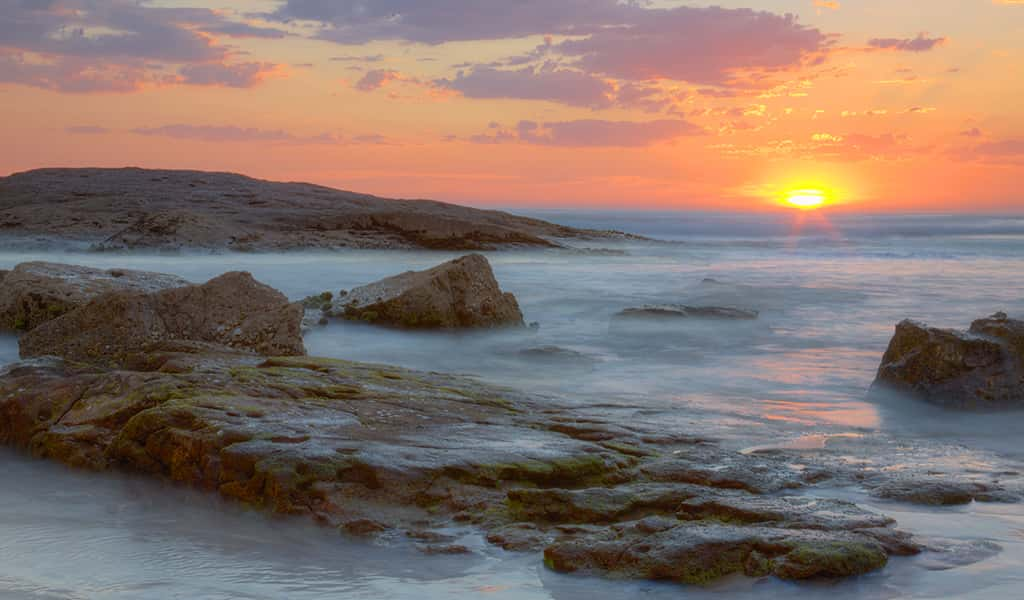
Discover the Outback
Whether it’s jumping into a swimming hole, fishing in the Kimberley Region’s freshwaters, hiking rocky landscapes, watching amazing wildlife or taking in a once-in-a-lifetime stargazing experience, you’ll never forget a journey through the Outback. Driving yourself is an affordable option. You can also take a 2WD or 4WD, a train, or bus.
Of course, this is just a small sample of adventures you could take – see Nomadic Matt’s take on Things to See and Do in Australia and Australian Traveller’s The Outback on a Budget for more ideas.
Tip: Expect to be greeted warmly if you have a Canadian flag on your backpack. Australia and Canada share a kinship as commonwealth countries, and citizens from both locales are known as polite and warm – David
Learn more about traveling in Australia
- Australia – National Geographic
- Sydney’s deeper dimensions – National Geographic
- Diving at the Great Barrier Reef – The Blonde Abroad
- 101 ways to do Australia on a budget – Speedy Booker
- Australia 2018 Trip Recap – Rachael DeVaux
- Welcome to Australia – Lonely Planet
- Australia Travel Guide for 2019 – Nomadic Matt
- How to travel in Australia on a budget – y Travel Blog
- How much does it cost to travel Australia: A budget breakdown
- How to travel Australia on a budget – Culture Trip
- Australia on a budget in 10 days – Australia.com
- Outback journeys – Australia.com
- 20 places in Australia you can’t afford to miss – Travel Triangle
- 14 top-rated tourist attractions in Australia – PlanetWare
- Australia travel guide – Travels of Adam
Where else does Caddle recommend?
Caddle Recommends: German Vacation
Learn more about vacationing in German
Germany is a country where you might take in the picturesque, rolling hillside at a national park one day and breathe in the scent of a spicy sausage being grilled at Oktoberfest the next. Of course, you’ll also look forward to the taste of German beer quenching your thirst on a late September afternoon, or tour the spectacular Neuschwanstein castle. Passionate about history? Visiting the country’s striking World War II and Holocaust memorials is also a must.
There’s no mistaking that there’s a lot to see and do in the nation of more than 82 million people at the heart of Europe . We’ve got some tips on how to travel in the country safely and affordably, so if you’re traveling on a budget, read on.
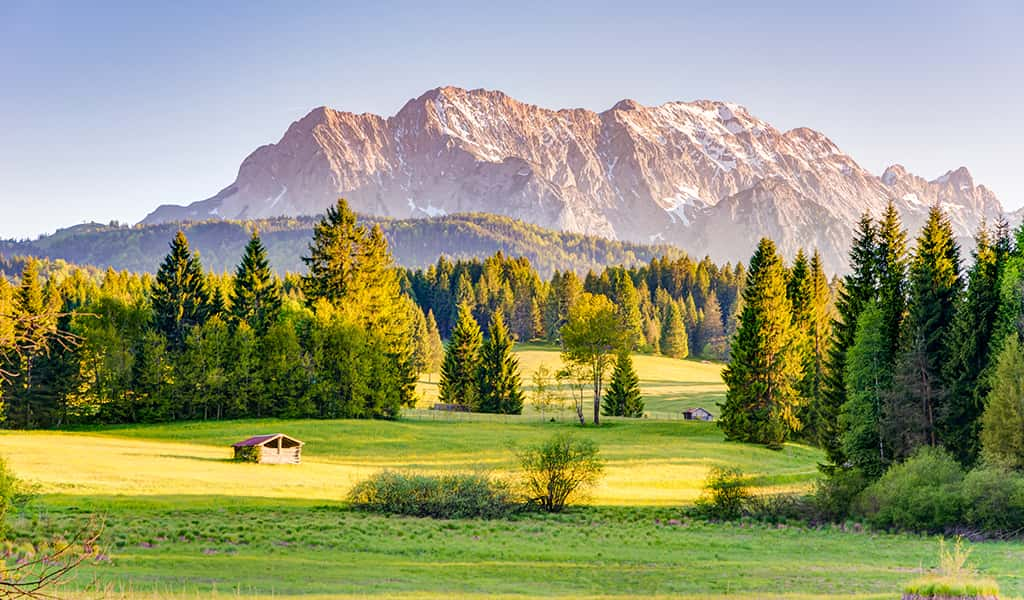
When to go
If you’re budget-focused, Culture Trip, suggests traveling between mid-January and mid-March, avoiding Carnival in Cologne or Düsseldorf. The last two weeks of October are also an option. Hoping to hit the ski hills? Visit between January and March, where you’ll find some of the best slopes in the world less than 90 minutes from Munich.
The weather changes throughout the year might factor heavily into your plans, along with the activities you’ll get to enjoy. According to Adventure in You, the best time (weather-wise) to to take a German vacation is during Europe’s summer season – April to November. Mid-season is April through June and September to October and brings sunny weather. You’ll also notice the country is quieter during these months, with lower prices except on public holidays.
Airports
Flying into Germany, you’re likely to land in one of the top five busiest airports:
- Frankfurt in Frankfurt/Rhine-Main
- Munich in Munich
- Düsseldorf in Düsseldorf/Rhine-Ruhr
- Berlin Tegel in Berlin, Potsdam
- Hamburg in Hamburg
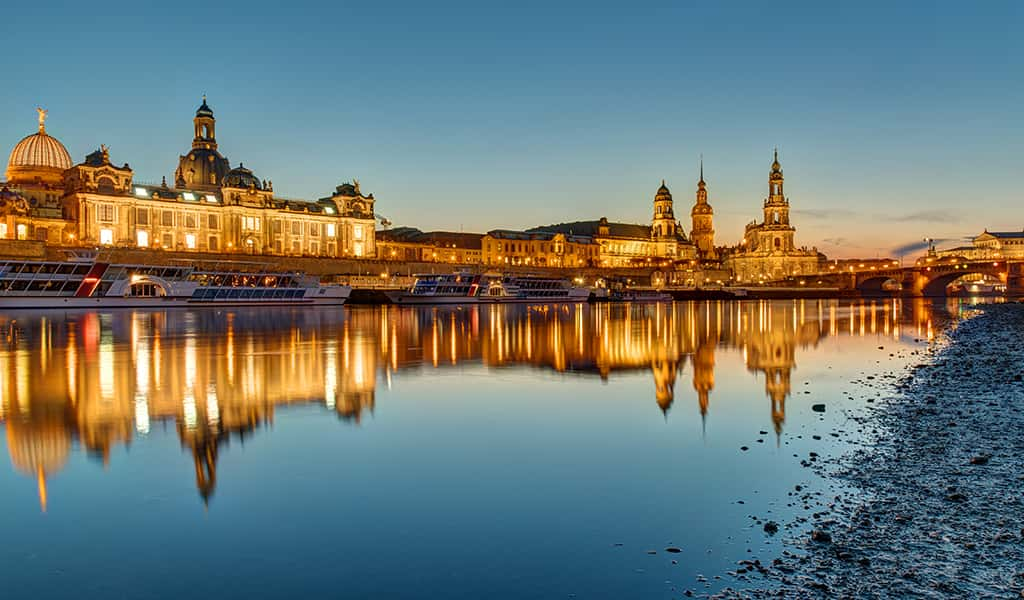
Bring cash, use public transit and rent a bike
Germany’s currency is the euro, and you’ll want some with you when you land. USA Today says you should get enough to cover immediate expenses such as taxis and snacks. Withdraw more euros at ATMs, which, similar to North America, are everywhere including airports, hotels, train stations and attached to banks (you can also use a bank if you’re comfortable going that route).
Leave your plastic in your wallet, and don’t count on using Apple Pay as it’s not very popular or accepted by most businesses, advises travel blog Travels of Adam. Locals prefer using cash and coin for just about everything. Your second option is an EC card (a debit card usable in Germany).
Affordability
One of the reasons travellers love Germany vacations is for the affordability – those euros go further than in many other countries. Depending on what type of experience you’re looking for while visiting, you should budget anywhere from $40 to $120 a day, with accommodations and activities the top two expenses.
Tip: Your server may tell you what you owe instead of bringing you a bill. When you pay, don’t leave your tip on the table – hand it directly to your server.
Savings Tips
On a backpacker’s budget? Adventure in You breaks down accommodation, food and transportation costs in an easy-to-understand format. Get a dorm for €10 to €30 ($12 to $35) a day. If you’re willing to spend more for more comfortable surroundings, a mid-range hotel room will cost you €60 to €100 ($70 to $120). Grab some street food for €2 to €4 ($2 to $5), or a meal in a restaurant for €15 to €20 ($18 to $25). Budget Your Trip also breaks down the price of food and travel, putting daily travel at €106 ($120), food at €28 ($32) and the average price of a hotel for one week for a couple at €1,491 ($1,686). You can travel locally for €16 ($18) or between cities for €49 ($55). See the breakdown for more information on entertainment, tips and alcohol costs. You can also rent a hostel for €30 to €90, says TripSavvy . HotelsCombined offers price checks on hotels.

Transport
You have a diverse range of options for getting around Germany’s cities and larger towns. In large cities, you’ll find an integrated transit system with trams, U-Bahn (underground subway) trains, S-Bahn (suburban) trains and buses. Speaking of buses, Lonely Planet says they’re “a ubiquitous form of public transport, and practically all towns have their own comprehensive network.”
Sometimes they’re supplemented by the faster trams (Strassenbahnen), which run on their own tracks. Generally, you can purchase a single ticket or day pass for the bus or tram.
Tip: Use GoEuro to compare/book transport options anywhere in Europe.
The country is well-known for being cyclist friendly and you’ll be happy to find you can rent a bike and cruise the dedicated bike lanes in many cities.
Tip: On Sundays, most shops including supermarkets, retail stores, malls, etc. are closed.

See stunning castles
Whether you’re bringing the family for an unforgettable tour of the world power, spending a few days at Oktoberfest or strolling through the vineyards Rhine Valley on your honeymoon, German vacations hold something for everyone.
Europe’s second most populated country is home to the Berlin Wall and several World War II sites , such as the Nazi Party Rally Grounds in Nuremberg, the Holocaust Memorial in Berlin and concentration camps at Dachau, Bergen-Belsen and elsewhere that commemorate Germany’s dark history.
Tour historical sites
You’ll also find stunning castles and cathedrals to capture your wonder and imagination. Aachen Cathedral (aka the Imperial Cathedral), the oldest cathedral in all of northern Europe, was finalized in 935 and is the final resting place for Charlemagne, an eminent medieval ruler. Heidelberg’s Heidelberg Castle is one of Europe’s most famous landmarks and has inspired many artists and poets for centuries.
Ajay Khanna lived in Oestrich-Winkel (a small village near Frankfurt) with some close friends for a month before heading to Poland. He remembers boarding a bus to get to the main city, then hopping on a high-speed train to an airport so they could travel around Europe. The group also rented cars to get to Zugspitze – the highest mountain in Germany – to try skiing for the first time, an activity Ajay describes as “terrifying. I accidentally got on the wrong lift and the only way down was the red or the black path,” he remembers. “I highly recommend Zugspitze, as it was one of the most memorable parts of my trip.”
They also stopped at Neuschwanstein castle, “which was beautiful, basically a castle in the sky. I love winter, and Germany is where I felt right at home because [it’s weather is similar to] Canada’s.”
After spending some time in Europe, Ajay returned to Germany and traveled by bus from Berlin to Warsaw, Poland.
<blockquote"It took us about eight hours and I paid about 12 to 18 Euros round trip. I thought I'd test the bus service as I still had a lot of Europe to see. Berlin was closer to the summer, which was amazing because I got to experience both winter and summer in Germany."
He vividly recalls seeing the Berlin Wall and Checkpoint Charlie, which were both “unbelievable – [there’s] so much history behind these monuments and moments.”
Sip local beer at world-famous markets
After a day of exploring, head to Munich’s famous beer gardens (biergartens) , where you can enjoy some world-class suds on a hot summer’s evening. If you’ve got a science and technology enthusiast in your group, take them to the Deutsches Museum – one of the world’s largest science and technology exhibitions.
Tip: Nudity is common in public spaces such as parks:
<blockquote"Once upon a time, I tried to have a peaceful picnic by the river in Munich’s English Garden (one of the world’s largest city parks). Eating my pretzel was difficult
as an elderly man ran naked, wild and free across the river from me,
periodically bathing himself and flaunting his body like he was Ryan
Gosling on steroids." – Happy to Wander
Happy to Wander also advises nudity is expected and mandatory in many saunas, wellness spas, etc.
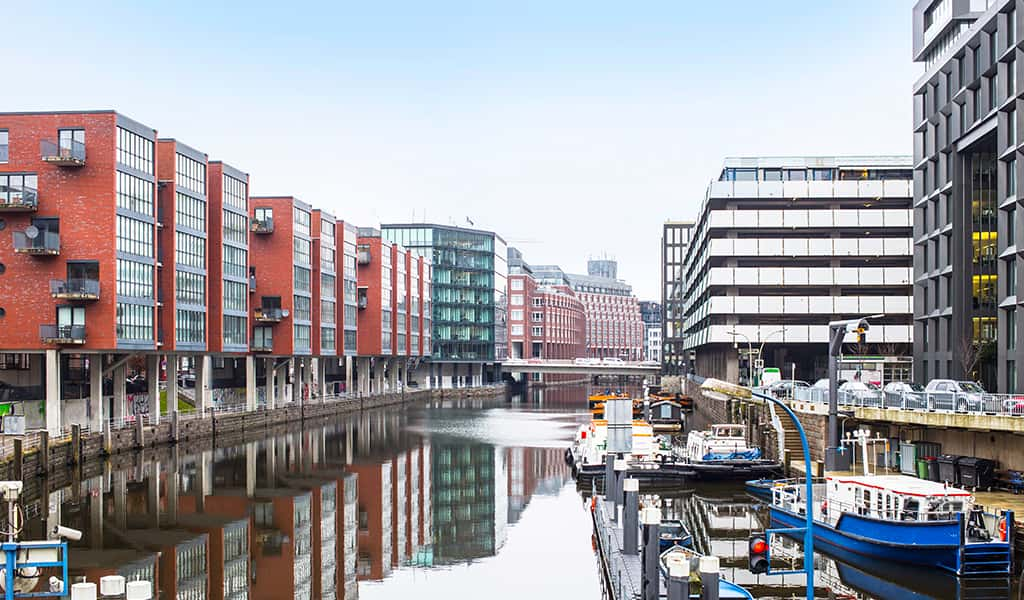
Germany National Parks
At Berchtesgaden National Park, get in touch with nature and hike the trails while enjoying gorgeous scenery of lush forests, crystal clear lakes and sleepy villages. If strolling through a sun-soaked vineyard and cruising the Rhine River by boat is more your speed, take a trip to romantic Middle Rhine Valley. Germany also knows how to host world-famous parties. Oktoberfest – the world’s largest folk fest – brings between 6 to 7 million visitors to Munich at the end of September and beginning of October to indulge in food, entertainment, music and activities for 16 days. Revellers indulge in everything from from sausage, poultry and roasted chicken to suds from local breweries and countless large pretzels.
Germany Christmas Markets
Traveling in late November/early December? You’ll have any number of Christmas markets to look forward to, where Gemütlichkeit (winter cheer) abounds and brilliant sights, sounds and smells await to delight your senses. Marvel at the world’s tallest Nutcracker at the Dresden Streizelmarkt or savor Glühwein, Käsespätzle, the local version of macaroni cheese while you stroll through Old Town Konstanz (there’s also a Christmas ship, moored at the quayside). In the medieval city of Nuremberg, you can enjoy spicy grilled sausages before browsing the handcrafted goods on sale in what is arguably Germany’s most famous Christmas market.
From medieval castles and the Middle Rhine Valley to the raucous Oktoberfest that brings millions of revellers to Munich every September to indulge in delicious German food and local beer, to its world-famous Christmas markets, and the striking memorials to World War II, you’ll always have new sights to see and new places to discover on your German vacation – all on an affordable budget.
German Vacations
Don’t forget to tell us about your experience! Have you ever traveled to Germany or are you planning to book a trip? What are your best tips when it comes to saving for vacations? We’d love to hear what you’ve planned, or any tips we’ve missed. Share your story in the comments and tell us what destinations are on your wish list. Our team love saving for holidays and we hope to inspire our members with exciting suggestions to spend your Caddle money.
Download the Caddle app
Where else does Caddle recommend?
Cannabis Research: Change is Afoot
on Canadian "High" Streets
Change is Afoot on Canadian “High” Streets
On October 17, 2018 Canada became the second country in the world (after Uruguay), and the first G7 and G20 nation to legalize recreational cannabis for adult use. While medical cannabis has been legal in Canada since 2001 (and available for purchase online after new legislation in 2014), a federally regulated recreational cannabis market, made legal by the passing of the Cannabis Act, represents the beginning of a completely new industry, full of unknowns. How much supply is necessary to meet the demands of Canadian consumers? What consumption methods will be most popular? Will high CBD strains be more popular with older generations of consumers?
While hypotheses and biases could easily be used to justify an answer to any one of these questions, neither industry stakeholders, special interest groups, citizen activists, or policy makers can rely on instinct alone to understand and operate in this new industry.

Don’t Market to the Average – Why Understanding the Canadian Market Matters
While States like Washington, California, Oregon, and Vermont offer some insights in to a post-legalization economy, understanding the specifics of consumer preference, perception, and consumption patterns in the Canadian market is fundamental to the success of cannabis growers, retailers, and brands in this country. While understand generalized consumption patterns is important for high-level decision making, cannabis brands that are looking to build relationships with consumers know that brand loyalty (and profit) relies on an obsessive understanding of their target audience. As with other verticals in the CPG industry, data-driven insights and decision making are the fuel that keeps the customer experience optimization fires burning.
Consumer Data Scarcity
“Consumer data scarcity is something that is being felt by brands across the board” says former Tokyo Smoke Brand Manager Taylor Keefe, now Brand Manager at Detonate Group Detonate Cannabis Agency in Markham. “In Ontario, for example, LP’s (Licensed Producers) and brands have some paid access to data from the OCS website. But that’s high-level, purchase data. That’s not enough of the picture to build sales and marketing strategies, to really understand what the consumer wants and what the consumer needs.”
Canadian’s perceptions of this new market are demonstrably and obviously different from those of our neighbours to the South. Research by Elle Wadsworth and David Hammond from the University of Waterloo School of Public Health and Health Systems show that young people in the United States and Canada have differing views on cannabis, most notably on perceptions of harm and impact on health. Research by industry specific media & lifestyle brand Civilized in partnership with PSB Research note that Canadian and American stoners are likely to differ in their demographic breakdown, consumption methods, and smoking rituals as well.

Bring your Buds, Bud – Why Data Matters for Consumers Too
Given the tight restrictions around cannabis marketing in Canada, brands have to find new and creative ways to engage with consumers. For now, packaging and branding restrictions ensure that brands trying to differentiate themselves have to rely on an educated consumer, or, where possible, have to provide consumers with the data they need to make informed purchasing decisions.
In an industry that has for decades existed in the back alleys, dark parking lots, and (literal) margins of Canadian society, data about cannabis (it’s effects, how to consume, what to consume, etc.) has largely been denied to curious consumers unwilling to operate within the Black Market. Now, those consumers (whether first timers or those returning to the plant) are faced with the daunting task of educating themselves. While some brands like Tweed and Tokyo Smoke are using their retail locations for consultations or educational sessions, not every pot brand in the country has that luxury.
“If you look at the industry in Manitoba right now, it’s kind of the Holy Grail. LP’s are in control from seed to sale, and the retail locations give brands the opportunity to connect with consumers, gather feedback in-store, and ultimately, build relationships and brand trust with consumers” says Keefe, “I think that’s one thing that Tokyo Smoke was able to do really well pre-legalization.”
Education is key
Although Tokyo Smoke’s flagship coffee shops in Toronto didn’t sell any bud (they still don’t), having a retail location gave consumers the opportunity to connect with the brand. “Where brands and LP’s have that direct interaction with their consumers, both parties win. At Tokyo Smoke we had Cannabis Yoga Night’s, classes about cooking with cannabis, even workshops on how to roll joints. When you can talk to your consumer face to face, it’s not just collecting feedback, it’s sharing information, it’s educating each other” Keefe says.
Brands that can use data to drive business decisions and educate consumers simultaneously will find themselves on the winning side of the brand battle while being at the right place, at the right time, with the right information for consumers looking to get a better understanding of this new industry. Brands using data to understand their customers know where they need to be and what they need to say to establish the relationships that will ultimately mean the success or failure of their business.

Change is neither Good or Bad. It Simply Is.
The introduction of cannabis as a new industry represents a fundamental change, full of uncertainty and opportunity. It was once said that change “can be greeted with terror or joy – a tantrum that says ‘I want it the way it was,’ or a dance that says ‘Look, something new.'”
As with all societal changes, be it technological, market-driven, moral, spiritual, political, or banal, informed decision making allows relevant stakeholders to cut through misinformation and “fake news” to make good, rational decisions. Even large, established CPG brands facing change and disruption must come to recognize the value of data-driven decision making. In a LinkedIn post, The Kraft Heinz Company President Nina Barton says that
We need to be strategic curators, anticipating and delivering on their wants and needs. Brands that step up, will win. Those that don’t, will be unseated.
Like the pioneers, explorers, and adventurers of old, marketers know that when it comes to navigating change, uncertainty, and the potential for new opportunities, having a map is a great way to make sure you get where you want to go, and you get there fast. Data is that map that can lead burgeoning new cannabis brands to the promised land of customer loyalty, brand health, and profit margins.
Godspeed.
CPG companies and understanding data
The Evolution of Consumer Shopping Behaviour
The evolution of consumer shopping behaviours and the way CPG brands are now able to communicate and interact with their loyal consumers has been fascinating to watch. Mobile technology has played a pivotal role within this evolution and disruption of the typical brick and mortar channel. During my six years plus years of experience working alongside many of the fortune 500 CPG brands , I have witnessed the many challenges that come along with trying to adopt to this new day in retail.
Working on the sales side of mobile technology platforms allows for this communication and better understanding of loyal consumers. I do want to make it clear that I dislike the term sales within this context.
I see myself as a problem solver, or consultant, an extension to a brands marketing team that is here to genuinely assist with any brand challenge that they are currently facing doing so by using technology.
Technology to Provide Data
The main output from this technology is data, consumer insights, which I believe is one of the, if not THE, most important part of any brands marketing strategy. With the emergence of new legislations and brands already limited control over consumer data,. The CPG industry seems to have fallen behind in gathering and utilizing effective data. Let’s address this and the reasons why this may be the case.

Data as a Resource of Marketing Strategies
Every marketing strategy should start and end with relevant consumer data. This should be monitored and tweaked throughout by new and timely insights. This includes pre-launch, pre-purchase, and post-purchase insights from a relevant audience. Some may argue that this is impossible due to a lack of resources to gather these new and up to date insights. There are definitely challenges to gathering relevant data before, during and after, cost being the main one.
However, the emergence of new platforms and technology has helped with these challenges. It is important to be open to exploring new ways to collect data. To not being afraid to be a first mover within the industry, and most definitely not getting stuck in your old ways.
This industry moves faster than ever, with trends coming and going, so it is critical to take advantage when you can and be able to speak the right language to your loyal consumer. It is even more important to listen to them and then react accordingly.
I see how brands are at the mercy of retailer POS data. For example this is needed to get an understanding of how a new product is performing in market. Once launched, it takes months to be able to receive these insights and then react. This is why brands need to be innovative and think outside the box.

Technology to Understand your Customer
Technology has allowed brands to understand their most loyal consumers more than ever. We need to embrace this and utilize this to our best ability in order to stay relevant and ahead of the competition. Be open to new platforms and new ways of building out your marketing strategy, making sure you’re utilizing data in the most effective way.
CPG brands may not have had control over their data in the past but the opportunity lies in the potential for innovation.
Feel free to reach out to myself and our team here at Caddle to discuss this topic further. We are always happy to demonstrate how we help brands solve challenges with the use of timely and relevant data.
Communication is key, Communication is king.
Customers and Clients
I’d like to think I’ve learned a lot when it comes to dealing with people & relationship building. From my experience in working in customer service for over 4 years, I realize now there is always something to be taught. We’ve all heard the saying, “the customer is always right”. Not to discredit the customer but I’ve learned that in 2019 it’s not that straightforward.
Working with customers is one thing but working with clients is entirely different. From a client perspective, not only do you make the sale but now you must nurture and grow any relationship in order to grow revenue. My mindset was always to keep the customer happy. Now I realize this is the role of my entire team and I assist with this by acting as the advocate for the client.
Currently, working at a startup, I am learning that as similar as customers & clients may be, more effort goes into supporting clients daily. My time is spent supporting clients’ objectives & goals and this is where communication is key in order to make these actions happen.

Teamwork makes everything work
Communication is a key factor in my approach for all involved in sales and campaign management.
A team needs to know how to provide all the details in order to communicate their expert views back to the client for a successful campaign. To dive a little deeper, the client needs to communicate their needs their account manager. Then it is the account managers responsibility to address and communicate those needs to the team in unison to achieve the goal of success for all.
These goals include; organization, time management, managing both internal (colleagues) and external (client) relationships. Every department within Caddle possess their own expertise within their department. By working together in a team, our clients receive the best feedback/improvement in order to meet their objectives.
Through proper engagement & communication with the entire team, the client gets the best experience possible. It’s amazing to see as the many aspects within a team it takes to create and implement a successful campaign, but together the team pulls it off, always!

Every client holds new opportunity for learning and that makes my day much more exciting. I enjoy learning and building the relationships with Caddle clients. I’d like to end by saying, yes, “the customer is always right” and also yes “working together as a team equals success”. Success comes from finding the balance and that’s the role of a strong account manager. Learning how to communicate best gives the best possible service to any potential client.
The United Kingdom Tourist plan of where and when to visit
Travelling to the United Kingdom
When you think of the United Kingdom, what comes to mind? Maybe it’s watching the comings and goings of the royal family, seeing the Changing of the Guard at Buckingham Palace, indulging in some mouthwatering pub food or exploring the picturesque Scotland Highlands. Whether you’re backpacking solo, looking for a romantic escape or travelling as a family, there are famous attractions and charming getaways waiting to be discovered.
Great Britain
Located off the coast of mainland Europe, the United Kingdom comprises the whole of the island of Great Britain – which contains England, Wales, Scotland and the northern part of Ireland, according to Britannica.com.
You can pick any number of reasons the U.K. was the seventh most popular destination for international tourist arrivals in 2017. According to the UNWTO – the World Tourism Organization – more than 37 million visitors flocked to the country to take in its immense coliseums and historic hotspots, elegant royal palaces, gorgeous gardens, exciting sports events, traditional pubs and more.

If you’re thinking of spending some time in the country yourself, we’ve got some great tips for you on how to save cash while sightseeing in a world-renowned land known for its British hospitality.
Think beyond expensive hotels
Stumped for affordable places to stay during your visit? You’ve got a lot of options for accommodations in the U.K. even during what’s referred to as the “high season”. Travel blog TripSavvy has a comprehensive list of hotel alternatives, from Airbnb (stay in a castle near Glasgo for as low as £5 per person, per night) and bunking in college dorms to couch surfing and even camping in someone’s backyard.
A word on pounds and pence
Just to make things interesting, there are different currencies in the U.K.. According to TripSavvy, England, Wales, Scotland and Northern Ireland use the pound sterling (£). However, if you’re planning a trip to Ireland, you’ll need to use the euro (€) there, not the pound.
Compounding the confusion is that while Scotland and Northern Ireland use the pound sterling, their bank notes are different from those issued in England and Wales. While most shopkeepers will accept Scottish and Irish bank notes, they are not obligated to do this because that currency is not afforded legal tender status in England and Wales.
You can exchange money at most bank branches and post offices. For more must-know tips on legal currency and how to exchange it, see TripSavvy’s Know Before You Go: A Traveler’s Guide to UK Currency.

Rent a car or hop on public transit
Heading to London? Pick yourself up an Oyster Card – for £5 (non-refundable), you can get around town for 10 quid (£1 coins) a day. The best part: any credit you don’t use can be refunded.
Using the tube (subway) is an easy and exciting way to get around the city, but Ajay quickly learned to only ask certified transit workers if he had questions or needed help.
“Many people may try to take advantage of you being a tourist and try to scare you by taking your tube card and claiming the refund,”

Explore the Scotland Highlands
“I would highly recommend visiting Scotland if you’re in the U.K.,” says Helen, adding Edinburgh and Aberdeen are her favourites. “But if you have time, it’s also worth hiring a car and exploring the highlands.”
Another option is to take the trains, but book in advance to snag tickets for a fraction of the price of a spur-of-the-moment ride. There are rail connections to each of Scotland’s seven cities, and you can buy tickets at train stations, from major travel agents, over the phone and online with a credit or debit card (ask your bank if your card will work). There are also automatic ticket machines. See tourism website VisitScotland.com for details on types of train tickets, discount fares and travel passes.

Find some pub grub
When you’ve spent the day on the track or the road, your stomach will be growling for some sustenance. You won’t have to go far to find some delectable pub food and stimulating conversation.
In England, buy your food at the grocery store as much as possible to save cash.
“Sure, it’s your vacation and you might not want to cook every night, but groceries are so much cheaper in England,” notes Keith. “It’s crazy to waste money eating out.”
Heading out? You’re in for a treat.
“The food (in London) was amazing, because at every meal I ended up chatting with the locals, who are just amazing,” says Ajay.
It was the closest I felt to being at home in Canada! People were so friendly, and the food always tastes better when you have great company.
If you’re a fish & chips fanatic, this is the place to be! London gets a ringing endorsement from Mark, who savoured the fish & chips he ate almost every day of his 10-day tour.
“From restaurants to street vendors serving your meal in a newsprint cone, you won’t ever be too far from a fish & chips place!”
Food Diversity
For those who crave Indian fare, many are BYOB (Bring Your Own Beer), so check out the brick lane area for leading establishments and stop at a local convenience store if you’d like wine with your dinner.
Since London is a bustling metropolis, locals often grab a bite on the go.
“Get used to seeing people on the move in London – you’ll see lots of people eating sandwiches and dinners at lunch time as they walk and talk. Londoners can really multitask,” says Mick.
If you’re looking for a familiar chain restaurant, Tim Hortons has expanded to England and has a few pop up shops in London.
In Scotland, order yourself a plate of fish & chips with mushy peas. Helen adds Wetherspoons is the place to go for an inexpensive drink.
“And if you are right in the region and get offered mint sauce, try it! It sounds so gross, but it’s delicious,”
Roam the streets of London, see historic sites and take in a game
Ajay spent eight months on exchange in Europe and found he thoroughly enjoyed taking long walks through the city’s streets and experiencing many of its beautiful historical attractions during his last month there.
“I stayed in London for just over a week and had some friends from Canada met up with me met up with me. We backpacked all over, starting in London,” he says, adding, “Most of my time was spent roaming the beautiful streets of London day and night.”
London is full of historical sights to see, but your back will be sore by the end of your trip if you carry a backpack all day. Instead, stop by Tate Modern coat check, where you can check your bag for free (although they do ask for a small donation). Bonus: this allows you to hit up many tourist sites that aren’t usually backpack friendly.
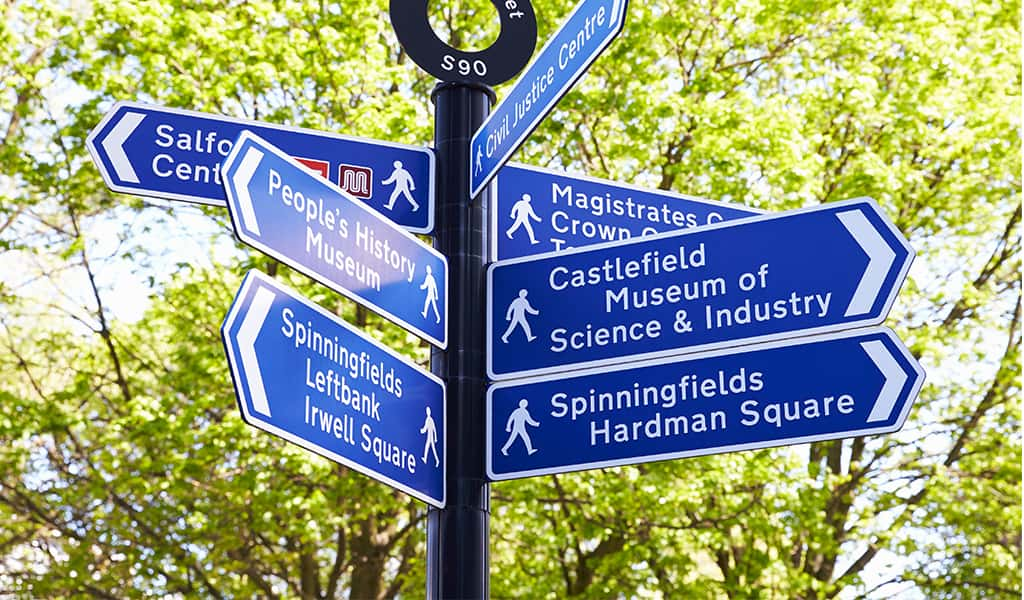
Stonehenge
Make Stonehenge one of your first stops. Although it’s far from the city, the trip is worth it.
“I was lucky enough to visit before the whole site was roped off, and got to walk right up to the site and touch the stones, which I don’t believe you can do anymore,” recalls Mark. “Regardless, it is an amazing site to see. Definitely don’t pass up the chance!”
On your walk back, pause to appreciate the poppies.
“The walk was long, but I’ve never had the chance to see such a long and glorious field of poppies,” says Ajay. “It was unreal and quite the unexpected experience.”
It was unreal and quite the unexpected experience.
Tip: You’ll see the best weather in England from April through September.
London
Some of the most iconic sites in London are free to visit. See Buckingham Palace’s changing of the guards, Big Ben, Westminster Abbey, London Bridge, Hyde Park and some museums. See The Full-Time Tourist’s 21 Tips for First-Timers to Help You Explore London for more info.
The city is also well-known for its many cathedrals, including the iconic St. Paul’s Cathedral (more than 300 years old), the Southwark Cathedral near Borough Market, Holy Trinity on Sloane Street, Westminster Cathedral in Victoria, and several more.
During Mark’s tour of these magnificent centuries-old sanctuaries, he noticed floors in stairs and entrance ways are worn down in many places and can be tripping hazards. Many attractions now route tourists on different paths, and switch them up constantly, to help reduce the effects of foot traffic on stone. See a map of cathedrals in the U.K.
Tip: Watch your step on stairs and entrance ways in old cathedrals. Because the structures are hundreds of years old and experienced constantly by countless visitors, they’re not as accessible as buildings built today. – Mark
Soccer
If you’ve got an athlete or sports enthusiast in your group, “get yourself to a football (soccer) game. You’ll be able to enjoy a warm cup of tae and meat pie at a majority of stadiums, and experience a match day atmosphere like no other,” says Mick.
Wrapping up
You’ll never be at a loss for things to do, sights to see and dishes to try during your visit to the United Kingdom. You can travel to the country on a budget if you’re willing to look beyond hotels and venture to an Airbnb or other alternative, keep an eye out for free attractions and hop on public transit.
Are you travelling to the United Kingdom for the first time? Returning to a favourite destination? What your best tips when it comes to saving for vacations? We’d love to hear what you’ve planned, or any tips we missed! Share your story in the comments!
Learn more about traveling in the United Kingdom
18 places you have to visit in the U.K.! – Hand Luggage Only
We asked 25 Londoners the coolest things to do in their city – Thrillist Travel
100 most popular attractions outside of London (Infographic) – Bit Rebels
Hunting for Harry Potter in the U.K. – A Dangerous Business Travel Blog
10 great reasons to visit the United Kingdom – TripSavvy
Why should you visit the U.K.? – VisitEngland
Where else does Caddle recommend?
The Bahamas islands: A Simple (But Complete) Guide
A Vacation to the Bahamas
Already wishing you could trade in your cold weather hat and mitts for a hammock swinging softly in a warm ocean breeze, a bathing suit and maybe even a colourful fruity drink at your side this winter? Look no further than The Bahamas.
This collection of 700-plus islands, cays and islets sprinkled across the Atlantic Ocean lies just 50 miles off the coast of Florida. The country welcomes about 6 million tourists a year, and it’s easy to see why. Sun, sand and miles of coastline bathed by the clearest water on the planet await you! And the archipelago is an ecological oasis – the world’s third largest fringing barrier reef (The Andros) is home to many species of exotic ocean life.
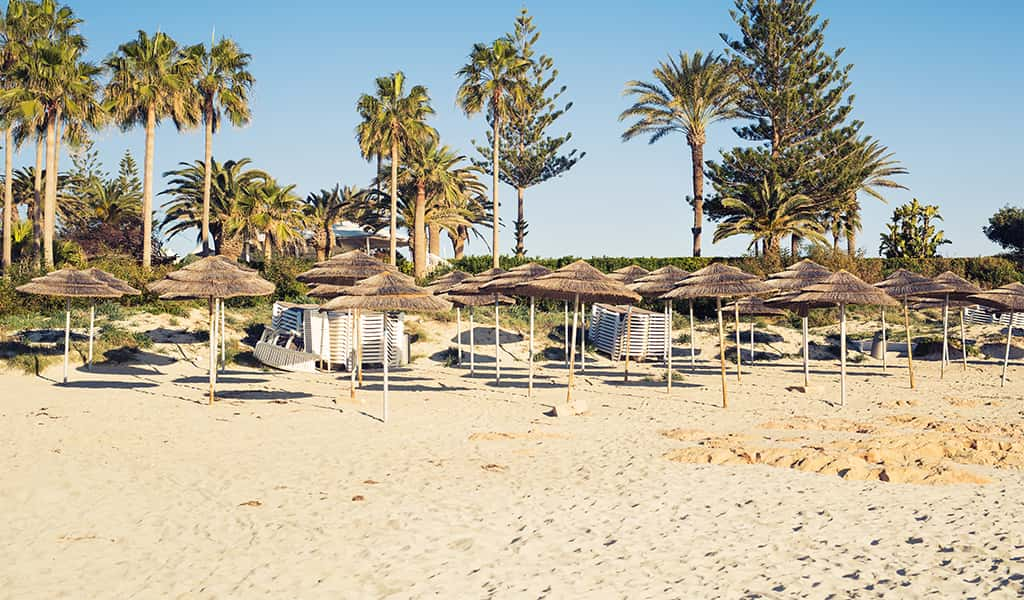
The best part: you can soak up the Bahamian sun, enjoy the tropical metropolis capital Nassau and even take some unforgettable adventures on a modest budget. Here are our best tips based on our personal experiences and research about this perfect year-round destination.
Take public transportation
Once you touch down at one of several airports or step off your cruise ship, you’ll have different transportation options depending on the island you’re headed to. There are 57 airports and airstrips across the islands, many of which have port of entry status. You could take the national Bahamas Air airline, an air-conditioned Bahamas Ferry, or perhaps a mailboat (essentially, slower ferries). You can also charter a yacht or flight.
From there, you’ll also want to consider your options for getting around the island you’re staying on. Most likely, you’ll end up on Nassau of New Providence, Paradise Island or Grand Bahama. Here, options are for the most part similar to what you’d see at home. Take a public bus (also called jitneys), taxi, or rent a car. If you’re feeling a bit more adventurous, you can even rent a scooter or take a horse carriage ride. Bermuda Attractions has a great guide to getting around the island, as does bahamas.com.
Stay in Nassau to save cash
As for where to stay in Nassau, you’ll find there are a range of options even on a budget. Rent an Airbnb to save cash on a hotel room, or find a good deal on a nearby hotel or villa. The Towne Hotel and Nassau Palm Hotel in the heart of downtown Nassau, along with Sunrise Beach Villas, are all close enough to the action that you’ll save on transportation costs.
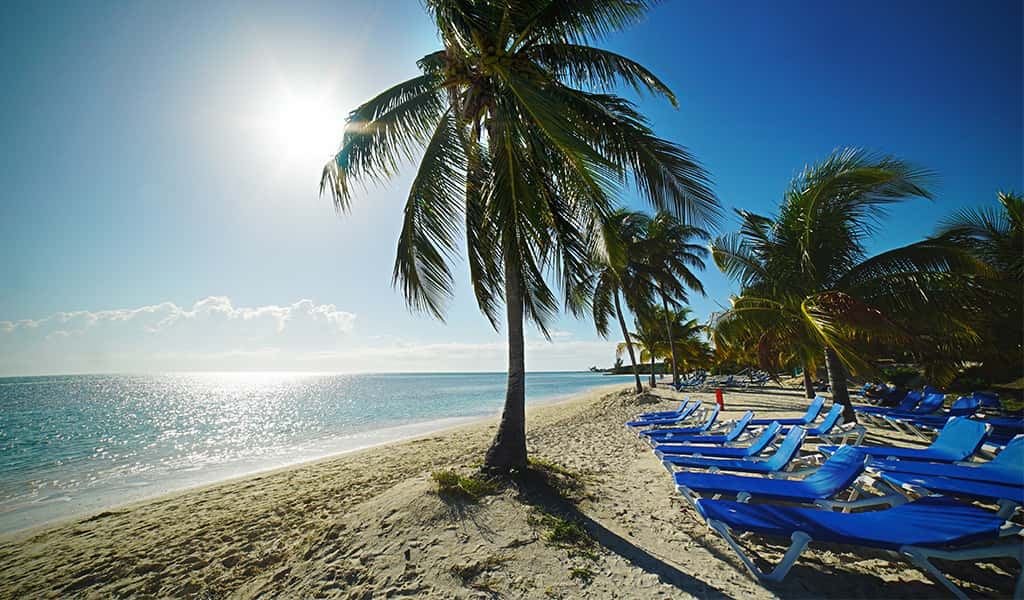
Discover Nassau and Paradise Island
When you venture outside to explore Nassau Paradise Island, you’ll discover it lives up to its name. Whether you’re looking to dive to the water’s depths to meet some of the beautiful marine life, search for handmade treasures in locally owned shops or indulge in a decadent night out, it’s all here. Learn more about what you can do for free in Nassau.
Tip: No need to switch your US currency to the Bahamian Dollar before you take off; the two are almost the same in value.
Source: Everything Everywhere
Waterparks
Though Mark found The Bahamas to be Americanized, he did discover some attractions worth checking out, including the massive 141-acre Aquaventure Atlantis Waterpark. As the Caribbean’s largest water-themed attraction, it draws international attention for its grandeur; you’ll find pools and beaches galore, one of the world’s largest open-air, man-made marine mammal habitats at Dolphin Cay, luxury accommodations, restaurants, fitness and sports facilities, and much more.
<blockquote"We didn't have the time, as this is a vacation on its own, but if you aren't going to visit Aquaventure Atlantis Waterpark at least take a cruise around Paradise Island,"
You’ll probably get to see homes of a few high-profile celebrities, including Nicholas Cage and Oprah.
And the Rum Punch served onboard the island cruises is a must.

Dining out
Tip: Try some Bahamian cuisine – shellfish, lobsters, crabs, and tropical fruits are popular. Pineapple tarts and fruitcake are among your delicious choices for dessert.
Source: Everything Everywhere
Craving a little taste of home? You’re in luck – there are Burger Kings all across the island to satisfy your appetite.
Excusions
For a one-of-a-kind experience, you’ve got to visit The Exumas, a chain of islands that stretches just south of Nassau. You’ll be greeted by miles of soft sparkling white sand beaches, turquoise waters and wondrous aquatic life, including stingrays and pigs – yes, pigs! Wild swimming pigs can be found near Staniel Cay on Big Major Cay, and you can even jump in the water with them. More about that (and a few other things to do while you’re there, here and here).
Planning that dream trip
As we’ve discovered, The Bahamas is an unspoiled paradise of immaculately clean beaches, blue waters, sublime resorts, and an entire ecosystem of marine wildlife to experience up close – all of which you can see on a budget.
Are you about to make your first visit to The Bahamas? Returning to a favourite vacation spot? What are your best tips when it comes to saving for vacations? We’d love to hear what you’ve planned, or any tips we missed! Share your story in the comments.
Where else does Caddle recommend?
Learn more about traveling in The Bahamas
Official home of the swimming pigs – bahamas.com
Best things to do in Atlantis Resort Bahamas – Diana’s Healthy Living
